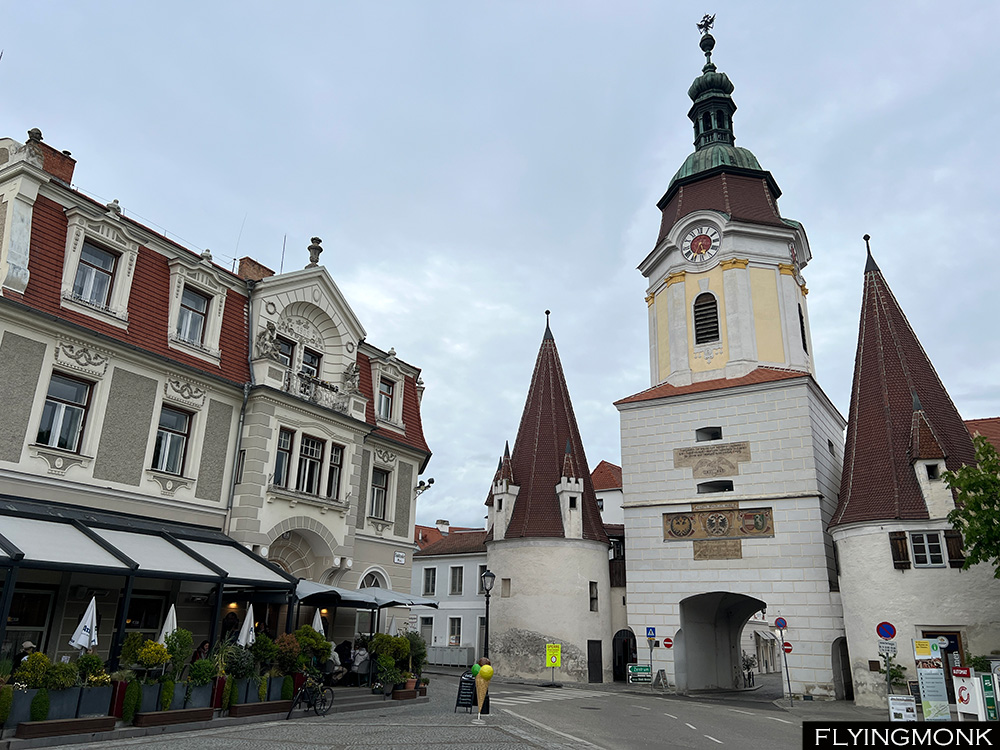
Somehow I was obsessed with Melk. First time I’ve been to Austria way too many years ago I stopped at the monastery mentioned in Umberto Eco’s “Il Nome della Rosa”. In writing his novel Eco found its inspiration in Melk’s library that he depicts vividly with intricate details. His mention of Egypt, a large slice of the library adds the desired element of mystery hidden in the encompassing collection of volumes. One interesting note in the library is the globe that shows America as a continent but with with a separate California as an island. Geological or political prophecy? Walking through the library, you can imagine spotting among the tourists the young disciple Adso di Melk, navigating the intricate labyrinthine of corridors looking for hidden treasures within the shelves.

The story goes that St Benedict left Rome disgusted by the opulent and deprived life that was the norm of the empire’s capital and went to live in isolation where he crafted his theological doctrine. His doctrine was adopted in Melk and for centuries was loosened and tightened with the coming emperors and current philosophies but somehow was able to be steadfast in preserving the catholicism in this area.

But the promised austerity does not show in the palace inherited from the House of Babenberg that established the dynasty that reigned over Austria, then known as the Imperial Margraviate of Austria. Margrave Leopold II made the decision in 1089 and bestowed Melk Abbey upon Benedictine monks. Melk Abbey Museum consists of 11 exhibition rooms richly filled with artifacts showing grandeur and power and less the desired austerity.

Wachau Valley, a charming portion of the Danube is filled by castle and monasteries that hide behind their walls lots of legends. You can cruise it with a boat from the town of Melk stopping in Spit, Durnstein and ending in Krems. There is a Wachau Valley train+boat ticket available for 82 euro. And either is a legend related to a king who died because he did not respect the religious obligations after her queen’s death or a bunch of rabbits stranded on top of a monastery when the snow that reached the roof suddenly melted, they make for cool stories when you cruise the UNESCO protected Danube valley.

Dürnstein’s first historical mentioning is in 1192 when King Richard I of England, famously known as Richard the Lionheart was imprisoned here. The story follows the Third Crusade, where both the king of England and the Leopold Duke of Austria were part.

Leopold imprisoned Richard whose seemingly actions at the Battle of Acre of casting down his standard from the walls offended him. Leopold also accused Richard of orchestrating the murder of his cousin, Conrad of Montferrat, in Jerusalem.

The bottom line is the Leopold threw Richard in the dungeon of Dürnstein Castle, perched above the town, now a romantic ruin The Pope got involved and excommunicated Leopold for capturing a fellow crusader and transferred Richard – the guy was not a choir boy, so he could not have complained of any witch hunt(!) – to Henry VI, Holy Roman Emperor, who imprisoned him at Trifels Castle.

During off season there is only one boat per day cruising Wachau Valley so from charming Durstein, the best spot of the valley, I took a local bus for a short ride to Krems. The town was first mentioned in 995 but here archeologists found a child’s grave dated as 27,000 years old, the oldest grave found in Austria. During the 12th century, Chremis/Krems was almost as large as Vienna. It looks like a typical Austrian-German town lined up with lots of shops some selling Marillenschnaps, an apricot brandy, Wachau Valley being famous for its apricot production as well as its vineyards.


You must be logged in to post a comment.